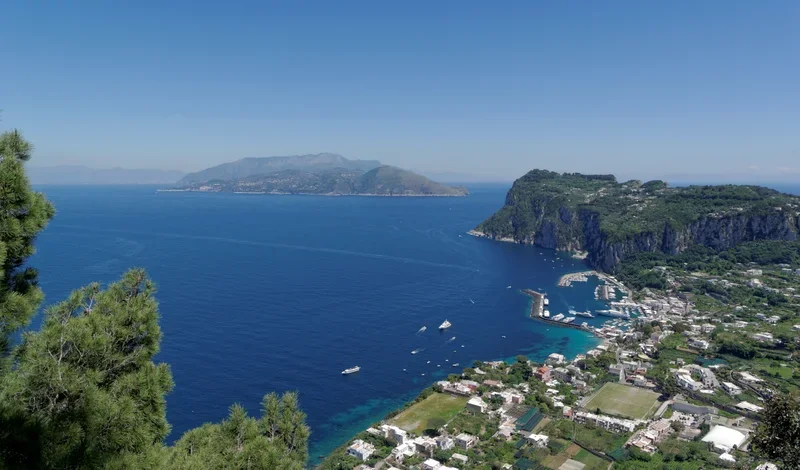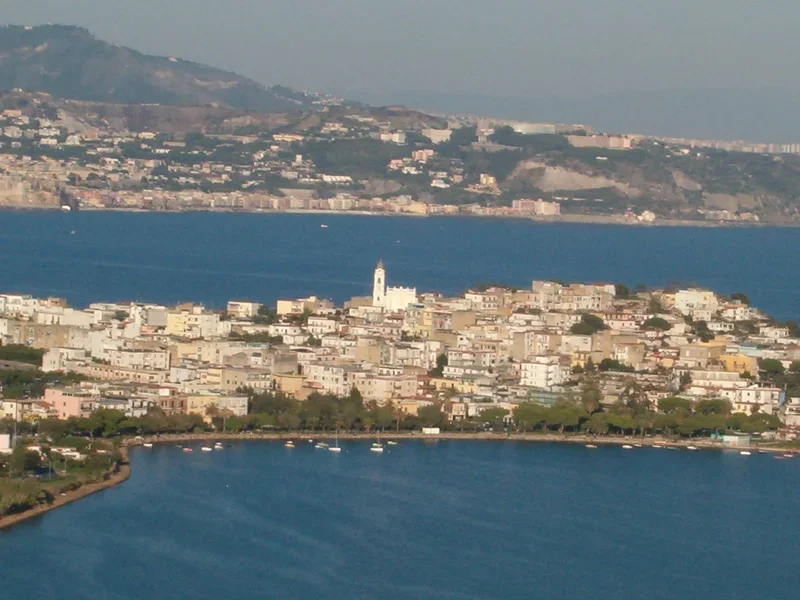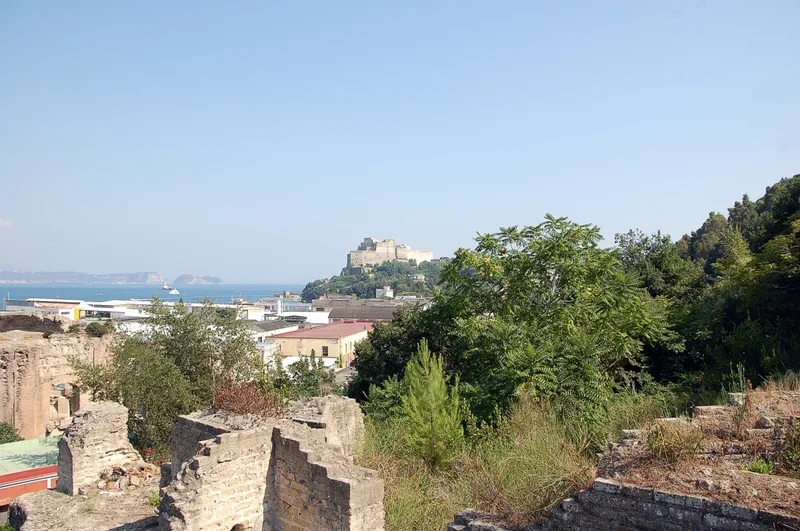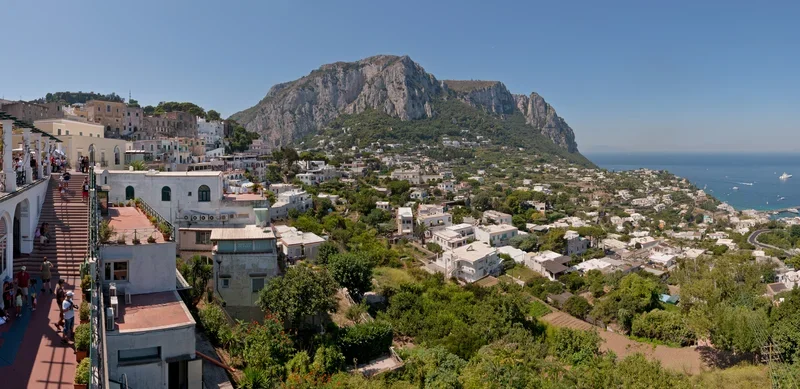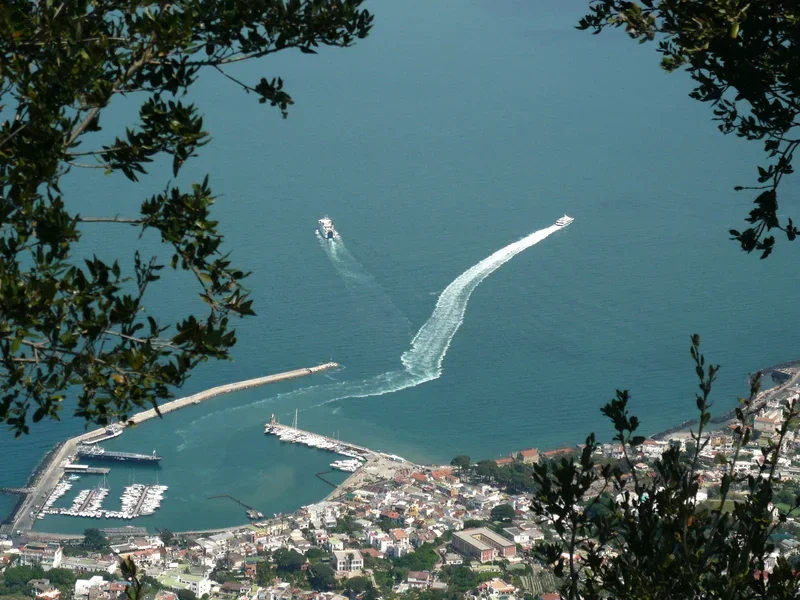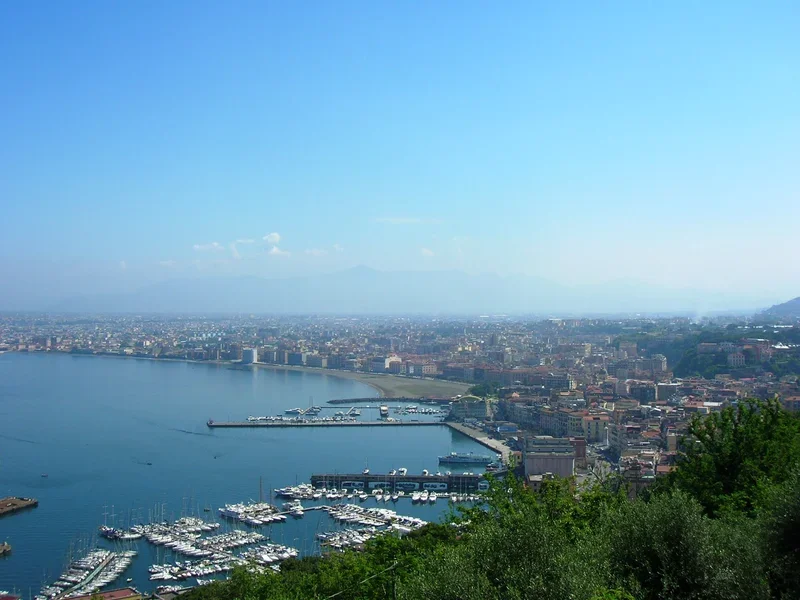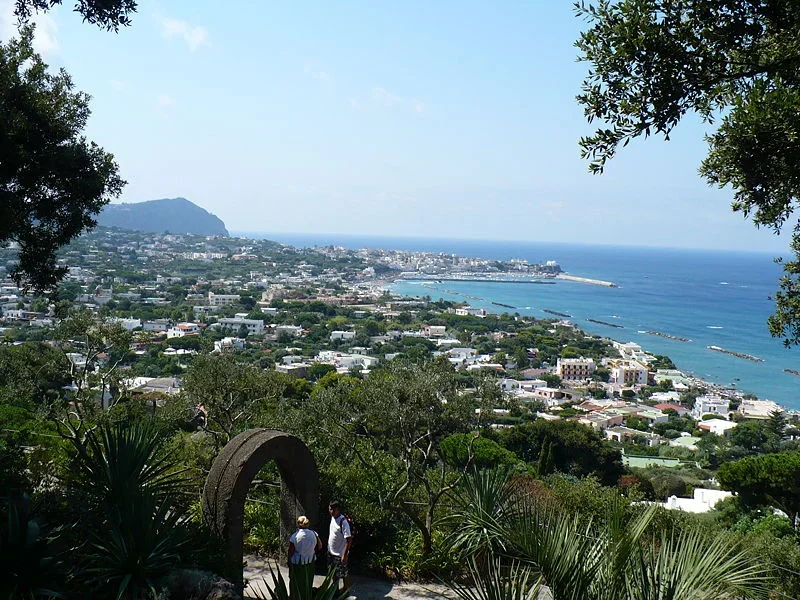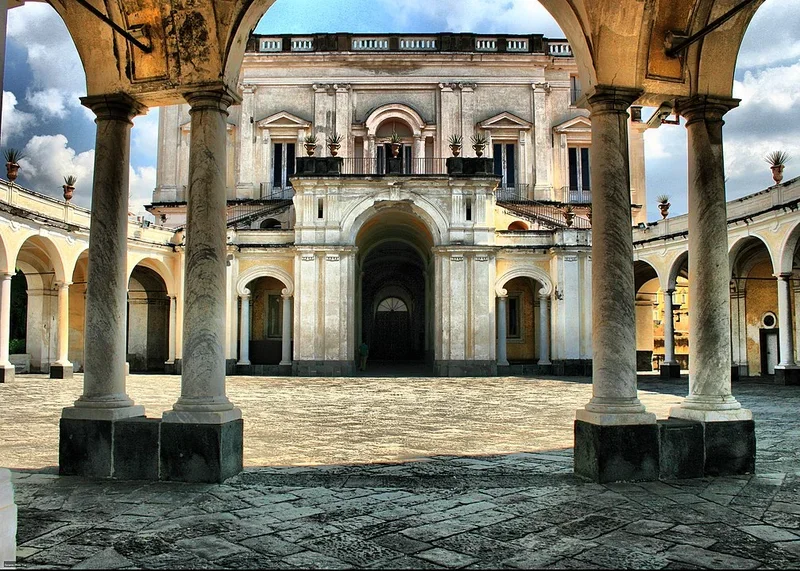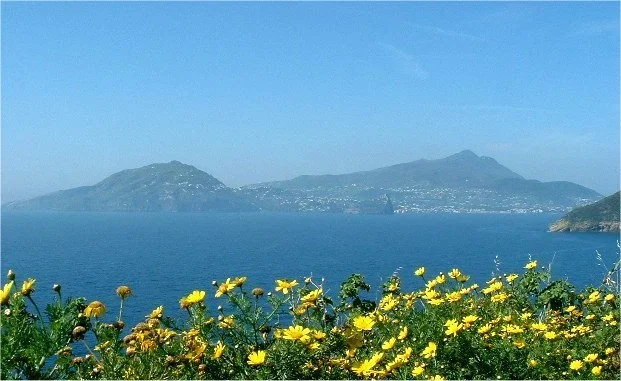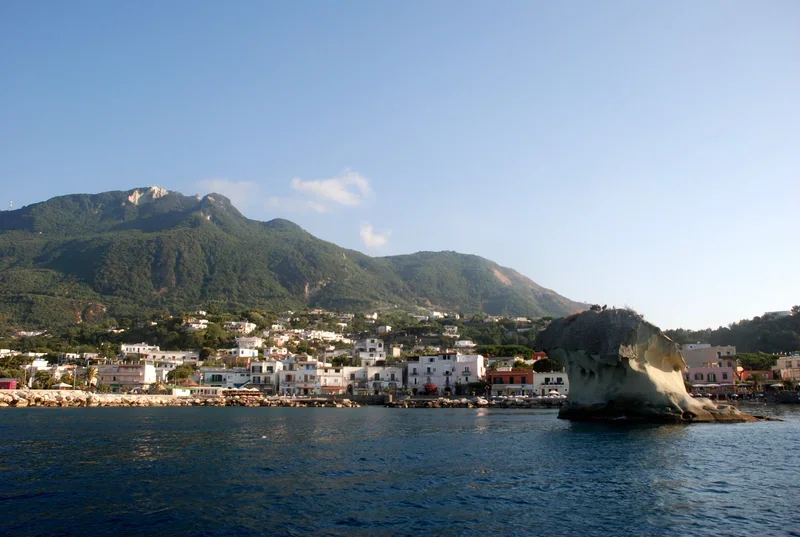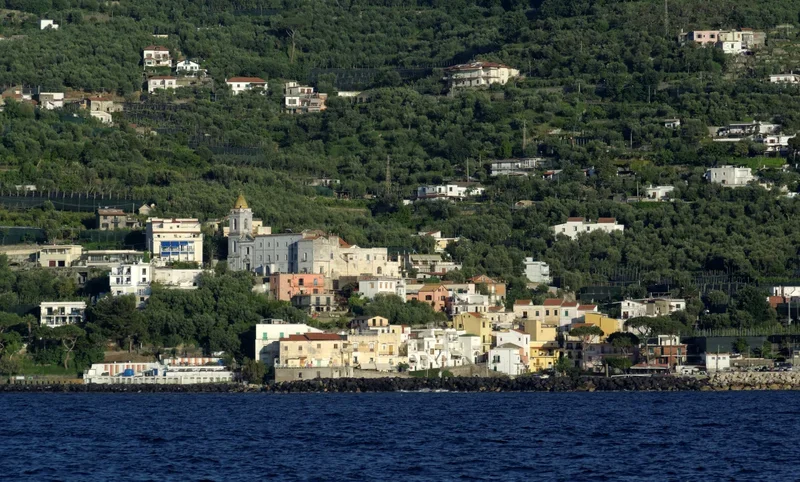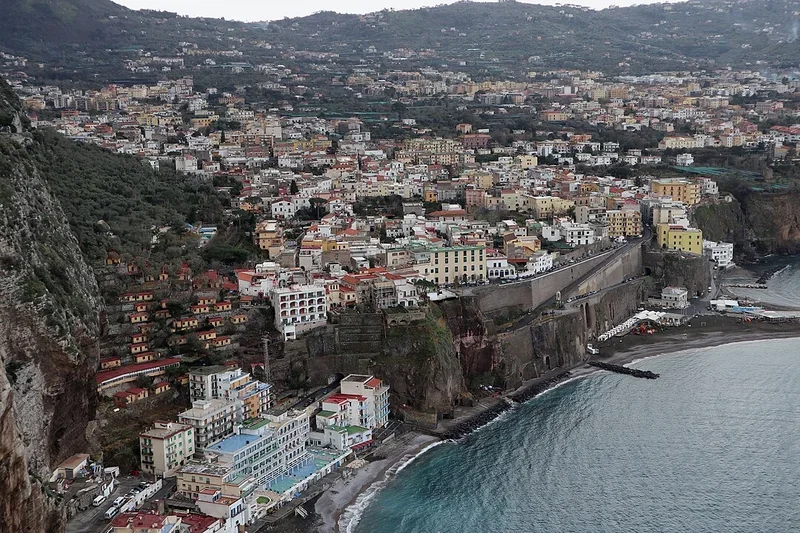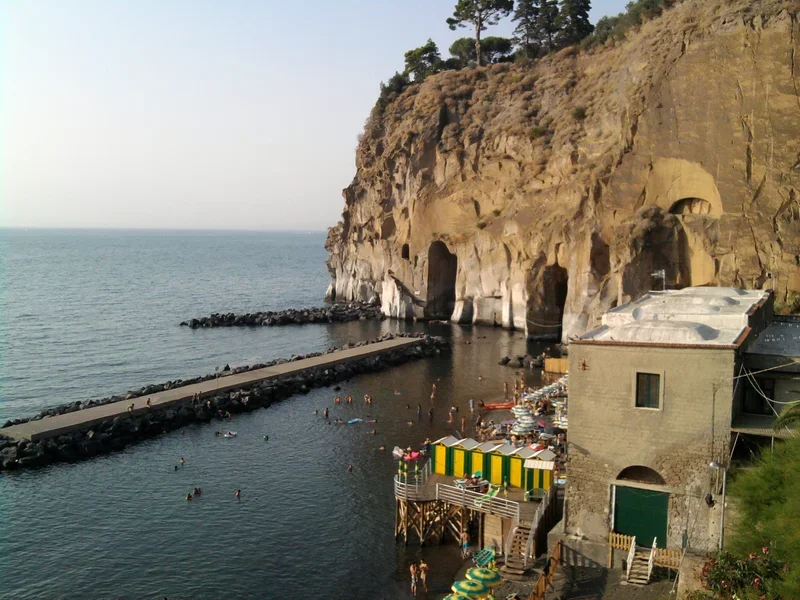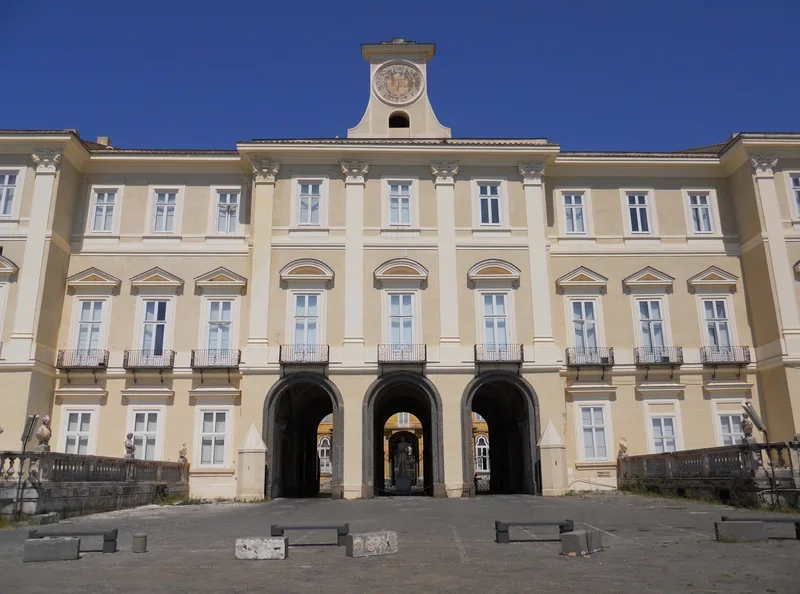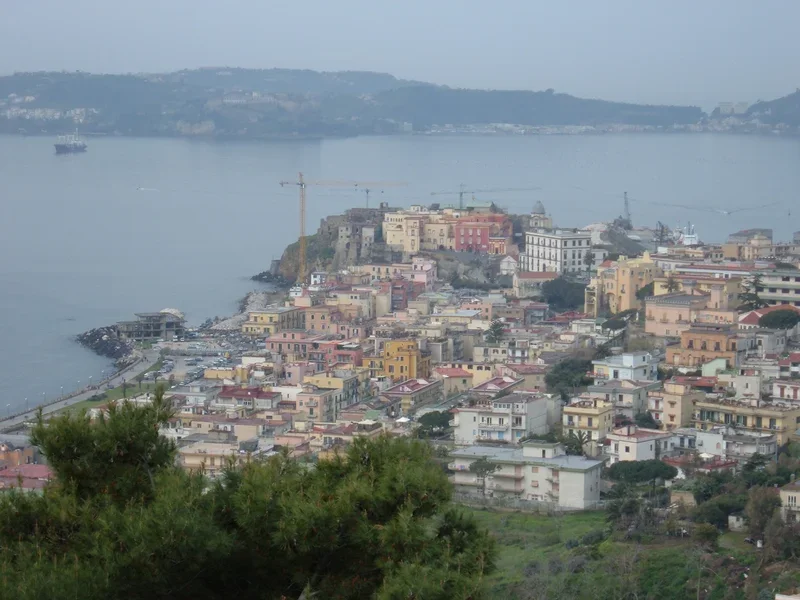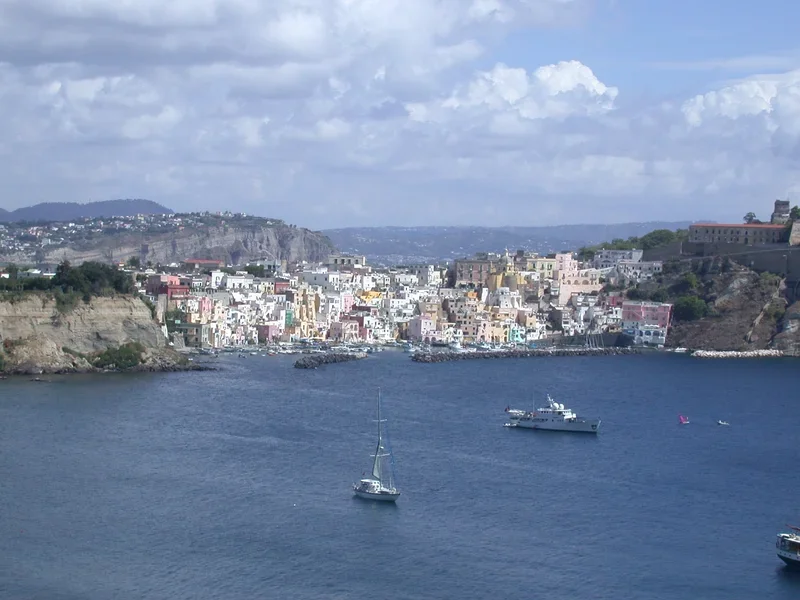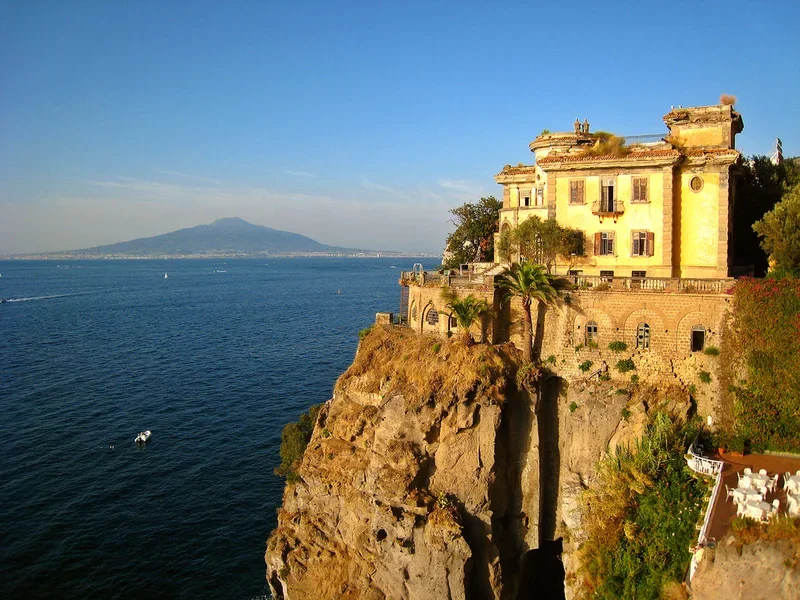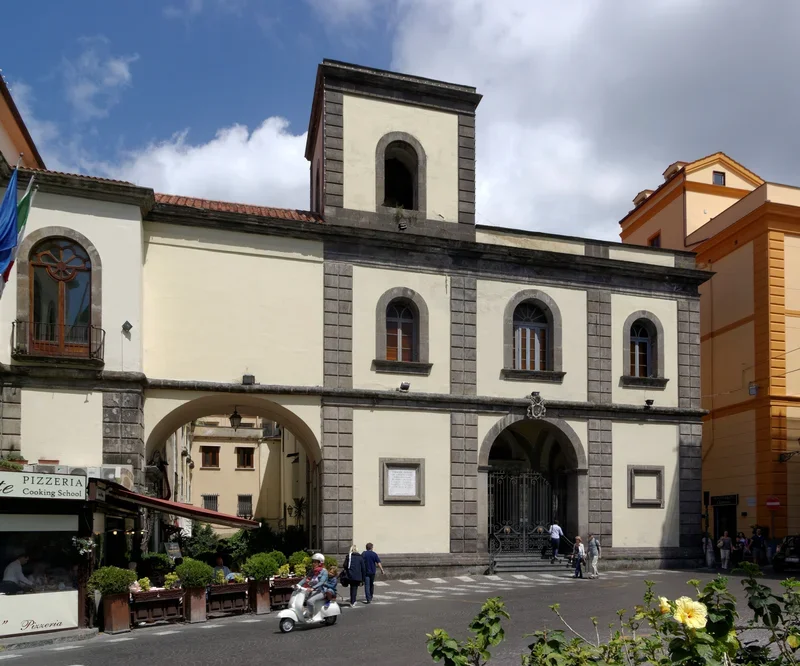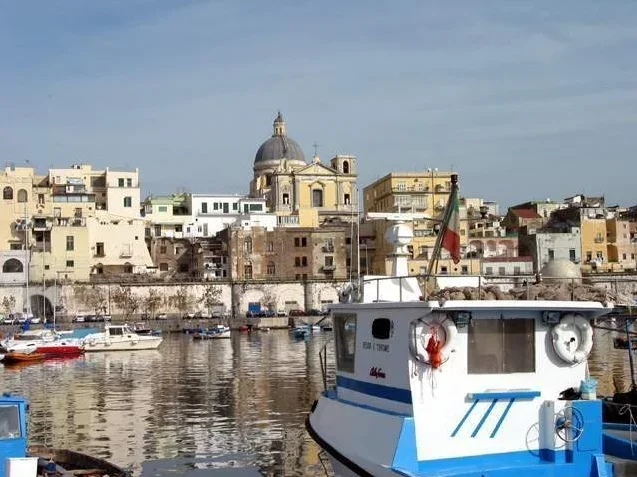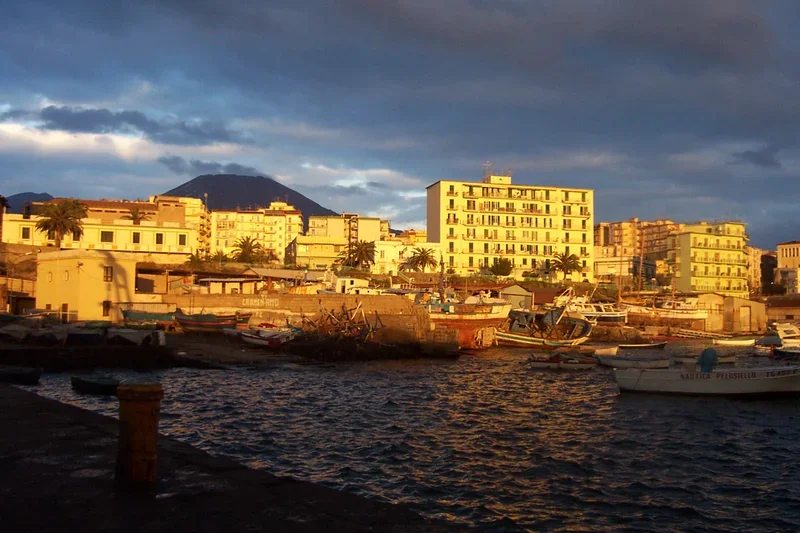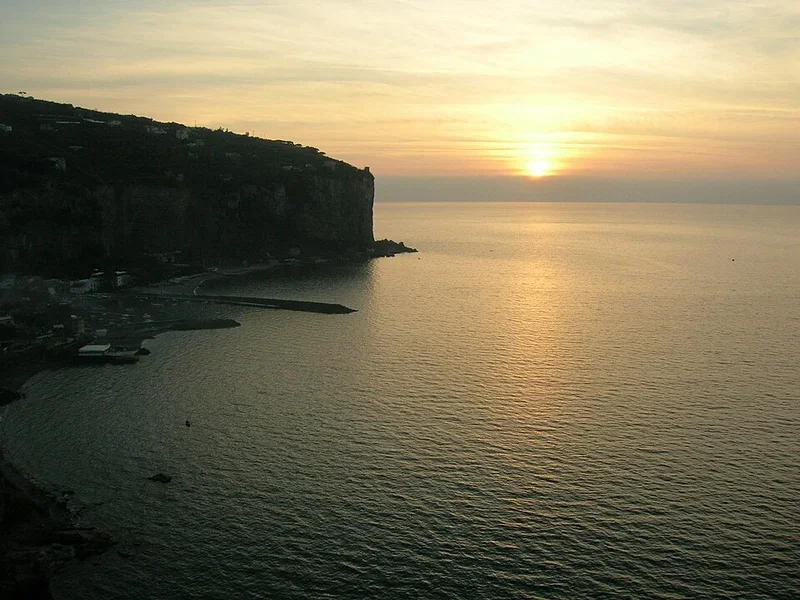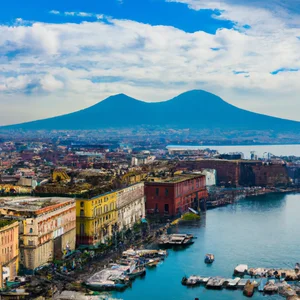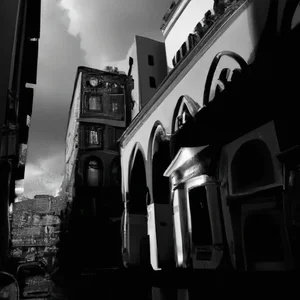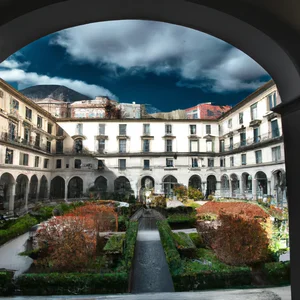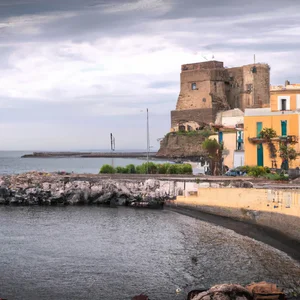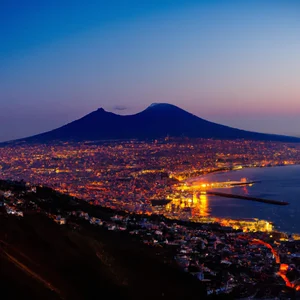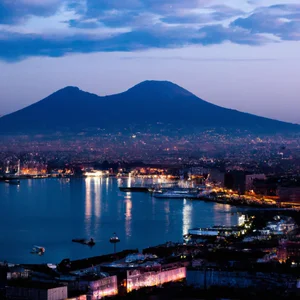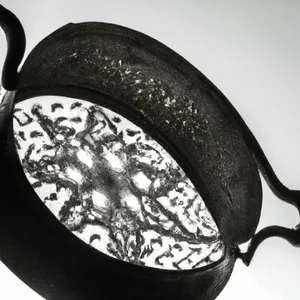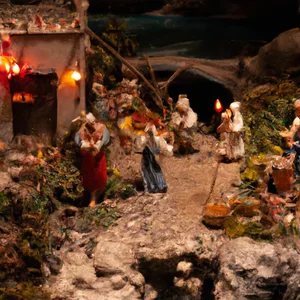Book your experience
Sejanus Cave
The Seiano Cave, a naturalistic and historical treasure located on the slopes of the Virgiliano Park, represents one of the most fascinating attractions of Naples and its surroundings. This extraordinary site, which winds through a tangle of tunnels and cavities, is a perfect example of how nature and history intertwine in a fascinating embrace. The cave is famous not only for its spectacular geological formations, but also for its archaeological and cultural significance, which has developed over the centuries.In our article, we will explore ten key points that will guide you to discover the Seiano Cave. We will start with an overview of its history and origin, revealing how this place has assumed an important role in the local historical context. We will then move on to examine the geological characteristics that make the cave so unique, following the route that will lead you to discover how to get there, the opening hours and ticket information.The archaeological importance of the site will be a central theme, as will the variety of flora and fauna that inhabit it. We will not fail to suggest interesting activities, including guided tours, and to tell the legends and myths that surround this mysterious place. Finally, we will give you practical advice to optimize your visit, together with suggestions on other places of interest nearby. Get ready to embark on a fascinating journey into the heart of the Seiano Cave, a place where the past and nature meet in an extraordinary way.
History and origin of the Seiano Cave
The Seiano Cave is a natural cavity located in the Virgiliano Park, in Posillipo, Naples. Its origins date back to Roman times, when it was used as a communication route between the city and the sea. The cave owes its name to Sejanus, a famous Roman architect who is credited with the construction of this underground passage, although there is no definitive evidence regarding his authorship.
Over the centuries, the cave has undergone various uses and transformations, going from a refuge to a place of worship. During the Middle Ages, in fact, the cave was used by hermits and monks, who found it a place of meditation and prayer. With the passage of time, the cave also acquired a cultural and mythological significance, linked to the figure of Virgil, the Latin poet who was associated with Naples and its landscapes.
During the Bourbon period, the Seiano Cave was the subject of restoration and enhancement, becoming an important tourist attraction. In the 19th century, the cave was opened to the public, allowing visitors to explore its natural and historical wonders. Today, the Seiano Cave represents not only an important archaeological site, but also a place of interest for those who wish to discover the history and culture of Naples.
Geology and natural characteristics
The Seiano Cave is one of the natural wonders found in Naples, located in the Pausilypon Archaeological Park. This cave is mainly characterized by a karst system, which was formed through the erosion of the limestone rock over millions of years.
Geological formation
The cave originated following processes of erosion and dissolution of the limestone rock, which created underground cavities and galleries. Its development was influenced by factors such as rainwater and the region’s seismic activity, which helped shape the shape of the land.
Physical characteristics
The Seiano Cave is approximately 700 meters long and has unique characteristics, such as stalactites and stalagmites, which have formed over the millennia. The temperature inside the cave is constant and humid, creating a particular microclimate that hosts a variety of organisms.
Internal structure
Inside the cave, you can observe various cavities and ravines, some of which are decorated with mineral formations. Natural and artificial lighting enhances the beauty of the walls, creating a fascinating and mystical atmosphere.
Geological importance
The Seiano Cave is not only a place of tourist interest, but also an important study site for geologists and speleologists. It offers research opportunities on the geological history of the area and on the dynamics of karst processes.
Access and how to get there
Location
The Seiano Cave is located in the Posillipo area, a charming neighborhood of Naples, famous for its panoramic views of the gulf and its historic villas. The cave is located inside the Virgiliano Park, a green area that offers an excellent opportunity to explore the surrounding nature.
How to get there
To reach the Seiano Cave, there are several transport options:
By car
If you arrive by car, you can take the Via Posillipo and follow the signs for Parco Virgiliano. There is parking available near the cave, but it is advisable to arrive early, especially on weekends.
By public transport
You can use public transport to get there. The stops of line 151 and line C12 are the closest. From the stop, you can reach the cave on foot in about 15-20 minutes, following the park paths.
On foot
For lovers of trekking and walking, there are several paths that start from the seafront of Naples and lead to the Seiano Cave. This route offers the opportunity to enjoy breathtaking views and explore the local flora.
Useful information
It is advisable to wear comfortable shoes and bring water, especially on hot days, as the route to the cave can be slightly challenging. Make sure you follow the signs and respect the surrounding environment.
Opening hours and tickets
Opening hours
The Seiano Cave is open to the public throughout the year, with opening hours that vary depending on the season. In general, the opening hours are as follows:
- Spring and summer: 9:00 - 19:00
- Autumn and winter: 9:00 - 17:00
It is advisable to check the official website or contact local tourist services for any changes in opening hours, especially during holidays or special events.
Tickets
The cost of the ticket for entry to the Seiano Cave is generally affordable, with different rates for adults, children and groups. You can find the following ticket information:
- Full price ticket: €5.00
- Reduced ticket (children and students): €3.00
- Free entry: for children under 6 years old and for people with disabilities and a companion
It is possible to purchase tickets directly at the entrance to the cave or by booking online, to avoid long waits.
Guided tours
Guided tours are available and highly recommended, as they offer an in-depth overview of the history and natural features of the cave. Experienced guides can enrich the experience with detailed information and fascinating anecdotes.
Guided tours may have an additional cost, which varies depending on the number of participants and the duration of the visit.
Archaeological importance of the Seiano Cave
The Seiano Cave is a site of great archaeological importance, located in the Virgiliano Park of Naples. Its importance lies not only in its natural beauty, but also in the historical and cultural remains that it preserves.
Ancient history
The cave has been used since ancient times, with evidence dating back to the Roman period. It is thought to have been part of an ancient aqueduct and communication system that connected the city of Naples with its surroundings. Its strategic position made it a place of refuge and passage for travelers and traders.
Archaeological remains
Numerous archaeological finds were found inside the cave, including ceramics, everyday objects and frescoes which testify to life of the peoples who inhabited the area. These finds offer a precious insight into daily life and cultural practices of past eras.
Research and excavations
In recent decades, the Seiano Cave has been the subject of various archaeological excavations which have brought to light further elements of interest, thus contributing to the understanding of local history. Archaeologists have documented stratifications that show continuity of occupation over time, revealing the importance of the site in the historical context of Campania.
Cultural value
Today, the Seiano Cave is not only a tourist attraction, but also an important research and education center regarding the ancient history of Naples. The discoveries made in the cave are exhibited in various local museums, helping to preserve and enhance the cultural heritage of the region.
Local flora and fauna of the Seiano Cave
The Seiano Cave, located in the picturesque setting of Posillipo Hill in Naples, is not only an important tourist attraction, but is also home to a variety of unique flora and fauna that are worth exploring.
Flora
The vegetation surrounding the Seiano Cave is typical of the Mediterranean scrub, characterized by a rich diversity of plants. Among the most common species are:
- Arbutus (Arbutus unedo): An evergreen shrub that produces edible red fruits.
- Myrtle (Myrtus communis): With its aromatic leaves, it is often used in cooking and in the preparation of liqueurs.
- Holm oak (Quercus ilex): An evergreen tree that forms dense forests and offers shade during hot summer days.
- Juniper (Juniperus spp.): Often found in rocky areas, it is known for its fragrant berries.
This vegetation not only contributes to scenic beauty, but also plays a crucial role in the local ecosystem, providing habitat for numerous animals.
Fauna
The fauna of the Seiano Cave is equally fascinating. Some of the species that can be observed include:
- Birds: The cave is an important refuge for various species of birds, including the woodpecker and the blackbird, which find in its environment a safe place to nest.
- Reptiles: There are various species of lizards and snakes, which move easily among the rocks and vegetation.
- Insects: The cave and its surroundings are home to a rich biodiversity of insects, which play a fundamental role in the pollination of local plants.
This biological diversity makes the Seiano Cave a place of great interest not only for history and archeology lovers, but also for nature and photography enthusiasts.
Activities and guided tours
The Seiano Cave offers various activities and guided tours to allow visitors to explore and appreciate the beauty and history of this natural wonder. Among the available options are:
Guided tours
Guided tours are led by local experts who provide historical and geological information, making the experience educational and engaging. The guides usually speak several languages and are able to adapt the tour according to the needs of the public.
Thematic tours
In addition to the standard tours, it is possible to participate in thematic tours which focus on specific aspects of the cave, such as its geology, local legends strong>, or the flora and fauna that can be observed in the surrounding area.
Family activities
For families with children, interactive activities are organized that make the visit fun and engaging. These can include educational games and creative workshops that stimulate the curiosity of the little ones.
Excursions in the surrounding area
It is possible to combine the visit to the Seiano Cave with excursions to the surrounding areas, such as the Parco Virgiliano or the Archaeological Park of Paestum, which offer further opportunities for exploration and discovery.
Booking tips
It is advisable to book guided tours in advance, especially during the high tourist season, to guarantee availability and avoid long waits. Some tours may have limited places, so it is best to inquire in advance.
Special experiences
Occasionally, special events are organized, such as concerts or artistic performances inside the cave, which offer a unique and memorable experience. It is advisable to check the official website or social media to stay updated on these initiatives.
Legends and myths related to the Seiano Cave
The Seiano Cave, located in the Virgiliano Park, is surrounded by an atmosphere of mystery and charm, fueled by numerous legends and myths that have been handed down over time.
Origin of the name
The name “Sejanus” is linked to Sejanus, an important historical figure, who was a friend and advisor to the Roman emperor Tiberius. It is said that Sejanus used the cave as a refuge and place of meditation, making it a symbol of power and secrecy.
Ghost stories
One of the most fascinating legends concerns the presence of spirits and ghosts inside the cave. It is said that during the night, visitors can hear whispers and unusual noises, attributed to the souls of the deceased finding eternal rest there. Some tell of sightings of mysterious figures wandering among the stalactites and stalagmites.
The hidden treasure
Another popular legend says that the cave holds a hidden treasure, left by pirates or legendary travelers who found refuge in this secret place. Many adventurers have attempted to find this treasure over the years, but no one has ever managed to unravel its mystery.
The connection with mythology
In ancient times, the cave was considered a sacred place and was associated with local deities. The ancients believed that its depths were a portal to the afterlife, and rituals were performed to honor the spirits and ask for protection. This connection with mythology has contributed to making the Sejanus Cave a place of great cultural and spiritual importance.
Today, the Seiano Cave is not only a tourist attraction, but also a place that invites reflection on the stories and myths that have shaped its identity over the centuries.
Places of interest near the Seiano Cave
The Seiano Cave, located in the Virgiliano Park of Naples, is surrounded by a number of historical and natural attractions that are worth exploring. Here are some places of interest you can visit nearby:
Virgilian Park
This panoramic park offers spectacular views of the city of Naples and the Gulf. It is an ideal place for walks, picnics and to enjoy the natural beauty of the area. Inside the park you can find well-maintained paths and areas equipped for relaxation.
Villa Doria Phamphili
One of the largest historic villas in Naples, Villa Doria Phamphili is an extraordinary example of Italian architecture and gardens. The villa is surrounded by large green spaces and offers a peaceful atmosphere, perfect for a break after visiting the cave.
Paestum Archaeological Park
A short distance from the Sejanus Cave, this archaeological park is famous for its well-preserved Greek temples and the museum housing historical artefacts. It is an excellent opportunity to delve into the ancient history of Campania.
Castel dell’Ovo
Located along the coast, Castel dell’Ovo is one of the symbols of Naples. Its panoramic position offers breathtaking views of the sea and the city. A visit to the castle allows you to discover the medieval history of Naples and enjoy walks along the seafront.
Certosa of San Martino
This ancient charterhouse, located on a hill, offers not only an important architectural testimony, but also a spectacular view of the city. Inside, the museum houses works of art and historical artefacts that tell the story of Naples.
Visit these places to enrich your experience in the Seiano Cave area and discover the rich history and culture of Naples and its surroundings.
Practical advice for visitors
Clothing and footwear
It is advisable to wear comfortable footwear suitable for rough terrain, as the path to the Seiano Cave can be slippery in some areas. Additionally, layered clothing is recommended, as the temperature inside the cave can be significantly cooler than outside.
Guided tours
Participating in guided tours is an excellent way to better understand the history and characteristics of the cave. Knowledgeable local guides can offer detailed information and answer questions, enhancing the overall experience.
Times and crowding
To avoid crowds, it is advisable to visit the cave during weekdays and in the early hours of the morning. Check opening hours in advance, as they may vary depending on the season and special events.
Photographic equipment
If you are passionate about photography, don’t forget to bring a camera or smartphone with you. However, please be respectful and careful not to disturb other visitors while taking photos.
Respect for the environment
It is essential to respect the natural and historical environment of the cave. Make sure you do not leave waste and follow all the instructions provided by the site managers. This helps preserve the place for future generations.
Contact information
Before the visit, it is useful to have the site contacts available for any questions or emergencies. Check online for any updates or changes to opening hours.
Services nearby
Check for restaurants and cafes nearby for a refreshing break after your visit. It’s also a good idea to bring water and snacks with you, especially if you plan to spend time exploring the surrounding area.

